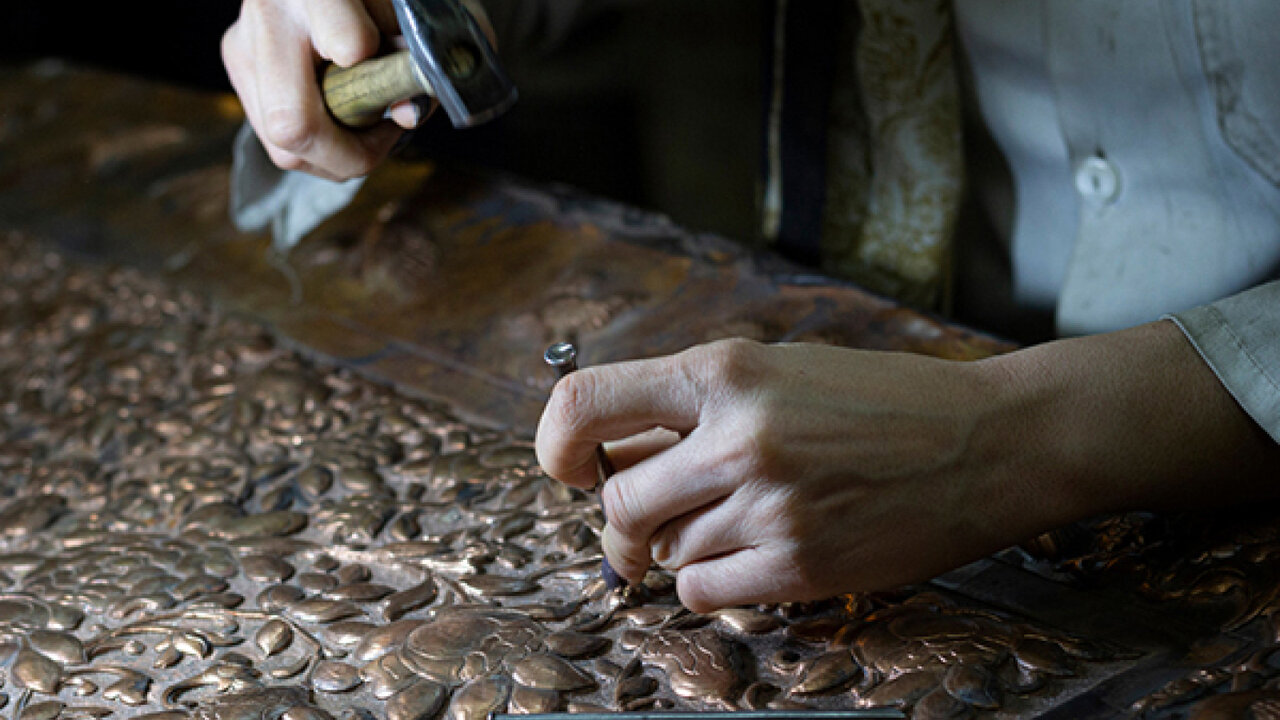Davatgari: an ancient craft still thriving in modern Iran

TEHRAN - Cold forging, known as Davatgari in Iran, is considered one of humanity's earliest professions, dating back thousands of years.
The ancient craft involves making utensils and tools from metals such as copper, brass, silver, gold, and nickel silver through hammer-working.
In this process, skilled smiths first bend a metal plate with precise and measured hammer strikes, then add parts such as handles or bottoms.
According to Visit Iran, these parts are consolidated by soldering or welding to create the complete tools. A key indicator of the creator's skill is that the finished product should be free of holes, with uniform metal thickness throughout.
Today, there are three methods of making utensils that incorporate modern technology: one-piece or seamless, multi-piece or with seams, and a method using a metal bending machine.
One-piece method
In this method, the metal plate is cut into circles with a radius at least equal to the height of the intended object. The center of the plate is placed on an anvil, and repetitive, close hammer strikes from the center outward from the plate into a bowl.
The plate is then turned over, and the edges are struck to reduce the opening, transforming the bowl into a vase or similar objects.
Multi-piece method
The metal is first cut into rectangular forms, with dimensions appropriate to the maximum height and circumference of the intended object.
The edges of two adjacent pieces are then thinned to half their thickness by hammering.
Machinery method
In this method, a machine called “Seh Nezam” or Three Jaw Lathe Chuck is used. Similar to the one-piece method, a circular plate is cut and placed into the machine along with a cast iron mold in the shape of the intended product.
As the machine operates, the plate and mold rotate together, while metal bars, each about fifty centimeters long, push the plate onto the mold, forming it into the desired shape. This method is used to create trays, large plates, bowls, mirrors, and candle holders.
The art-craft of Davatgari was once practiced across almost all parts of Iran, but today it is mainly found in cities such as Tehran, Isfahan, Shiraz, Tabriz, and Arak.
AM
Leave a Comment